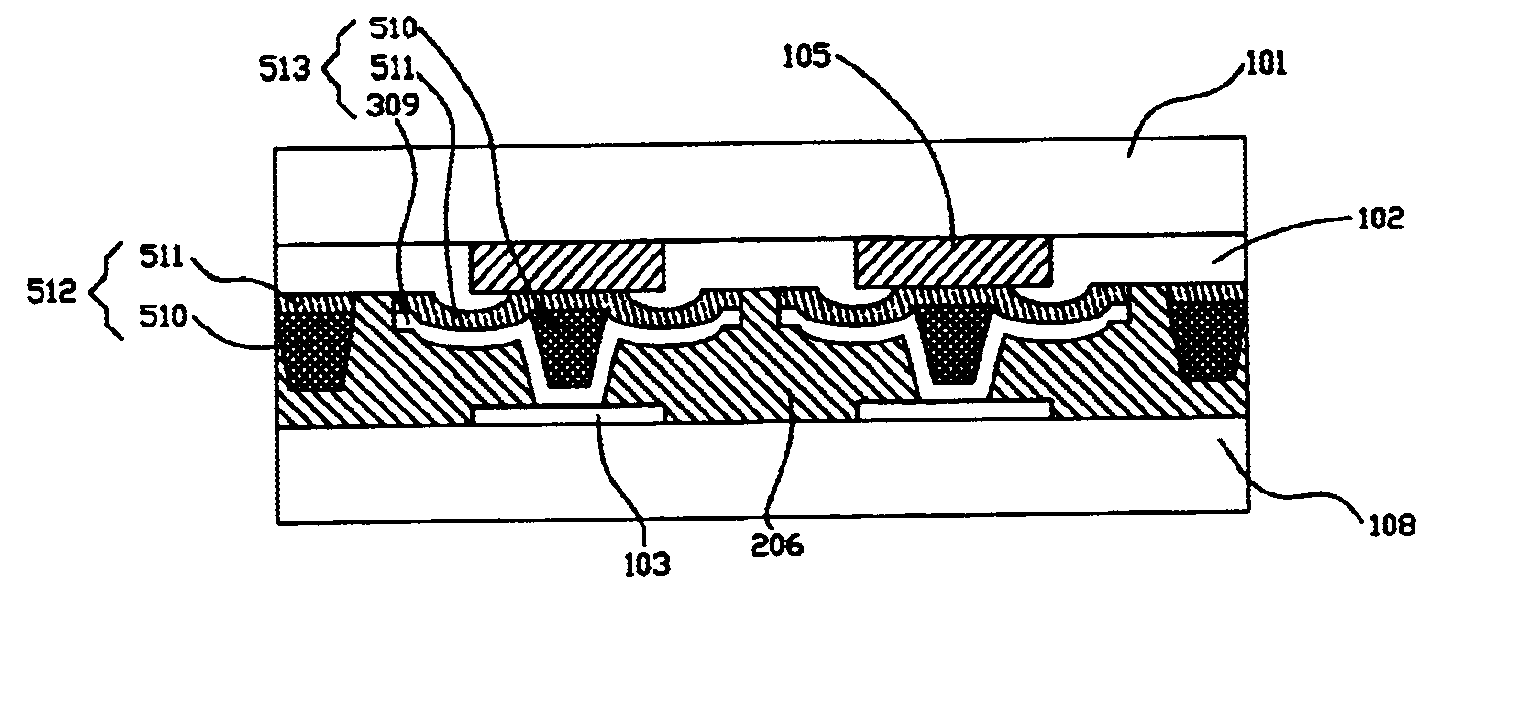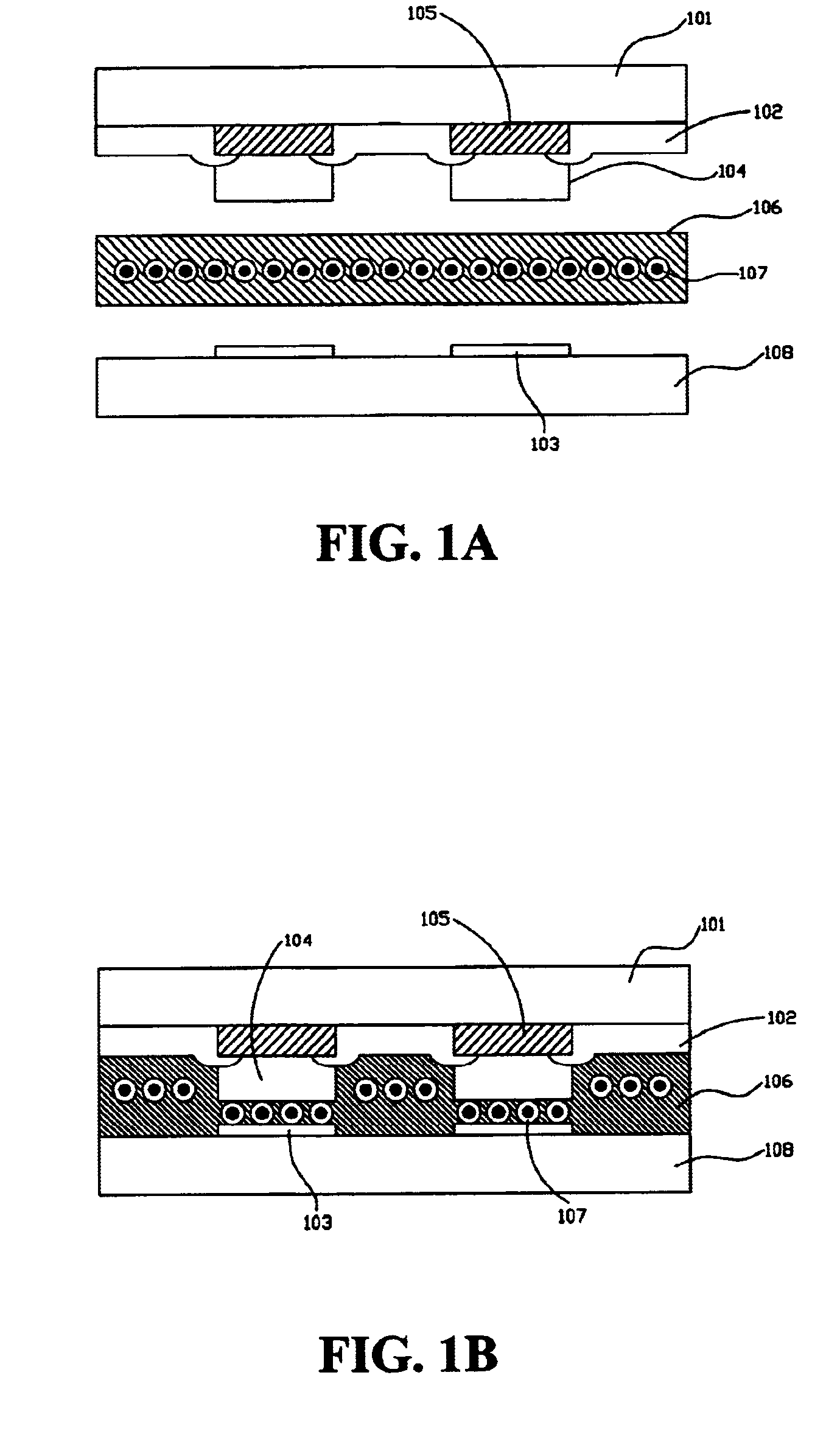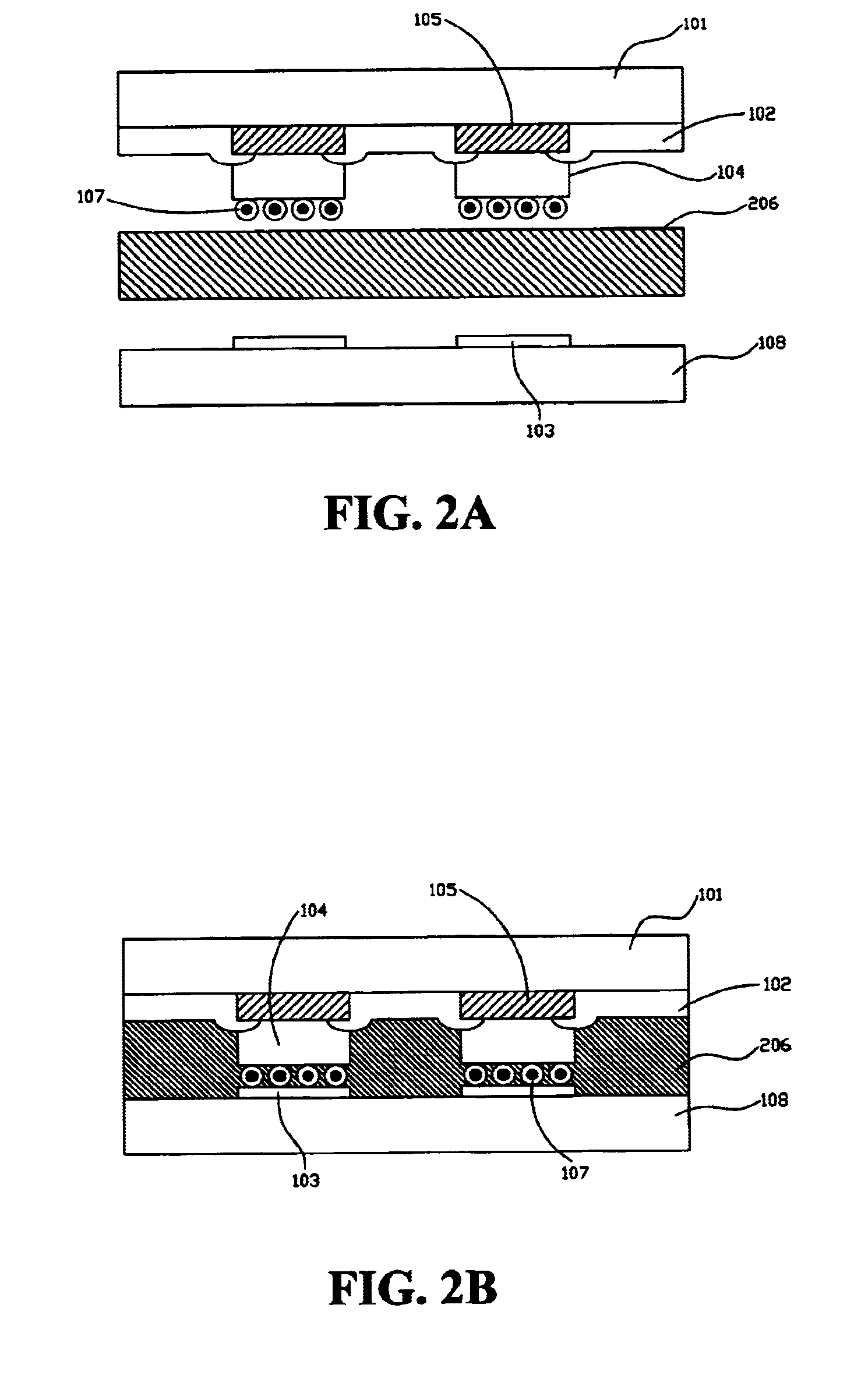Bonding structure with compliant bumps
a technology of compliant bumps and bonding structures, which is applied in the direction of printed circuit aspects, dielectric characteristics, printed circuit manufacturing, etc., can solve the problems of not meeting the technique cannot meet the finer pitch requirement, and the conductive particles b>107/b> will be lost and escape from metal bumps, so as to reduce the required pressure for bonding and reduce the elasticity coefficient
- Summary
- Abstract
- Description
- Claims
- Application Information
AI Technical Summary
Benefits of technology
Problems solved by technology
Method used
Image
Examples
first embodiment
[0035]FIG. 11A shows a top view of a rectangular compliant bump 1013. Rectangular compliant bump 1113A has two parallel rows of spheres 1115, and the stoppers are distributed outside of the compliant bump. Conductive layer 309 only covers half of each sphere 1115, and the outer half of spheres 1115 is not covered.
second embodiment
[0036]FIG. 11B shows a top view of a rectangular compliant bump 1013. Rectangular compliant bump 1113B has two parallel rows of spheres 1115, and the stripe stoppers 1112 are distributed on both ends, inside the compliant bump 1113B. Conductive layer 309 covers the entire spheres 1115, but not the stoppers 1112.
third embodiment
[0037]FIG. 11C shows a top view of a rectangular compliant bump 1013. Rectangular compliant bump 1113C has three skewed parallel rows of spheres 1115, and the stripe stoppers 1112 are distributed on both ends, inside the compliant bump 1113C. Conductive layer 309 covers the entire spheres 1115, but not the stoppers 1112. The stripe stoppers 1112 must be arranged in the direction orthogonal to the neighboring side of the first substrate to facilitate the expelling of flowing adhesive material.
PUM
 Login to View More
Login to View More Abstract
Description
Claims
Application Information
 Login to View More
Login to View More - R&D
- Intellectual Property
- Life Sciences
- Materials
- Tech Scout
- Unparalleled Data Quality
- Higher Quality Content
- 60% Fewer Hallucinations
Browse by: Latest US Patents, China's latest patents, Technical Efficacy Thesaurus, Application Domain, Technology Topic, Popular Technical Reports.
© 2025 PatSnap. All rights reserved.Legal|Privacy policy|Modern Slavery Act Transparency Statement|Sitemap|About US| Contact US: help@patsnap.com



